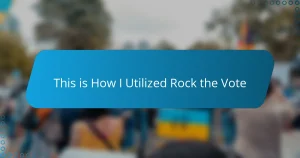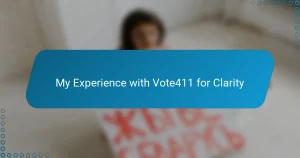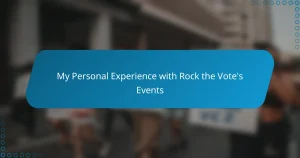Key takeaways
- Grassroots connections are vital for political campaigns, fostering personal relationships that drive engagement.
- Adaptability is essential as campaign strategies may need to shift rapidly in response to unforeseen events.
- Emotional storytelling often resonates more deeply with voters than mere statistics, enhancing connection.
- Volunteer involvement at all levels contributes significantly to the momentum and success of a campaign.
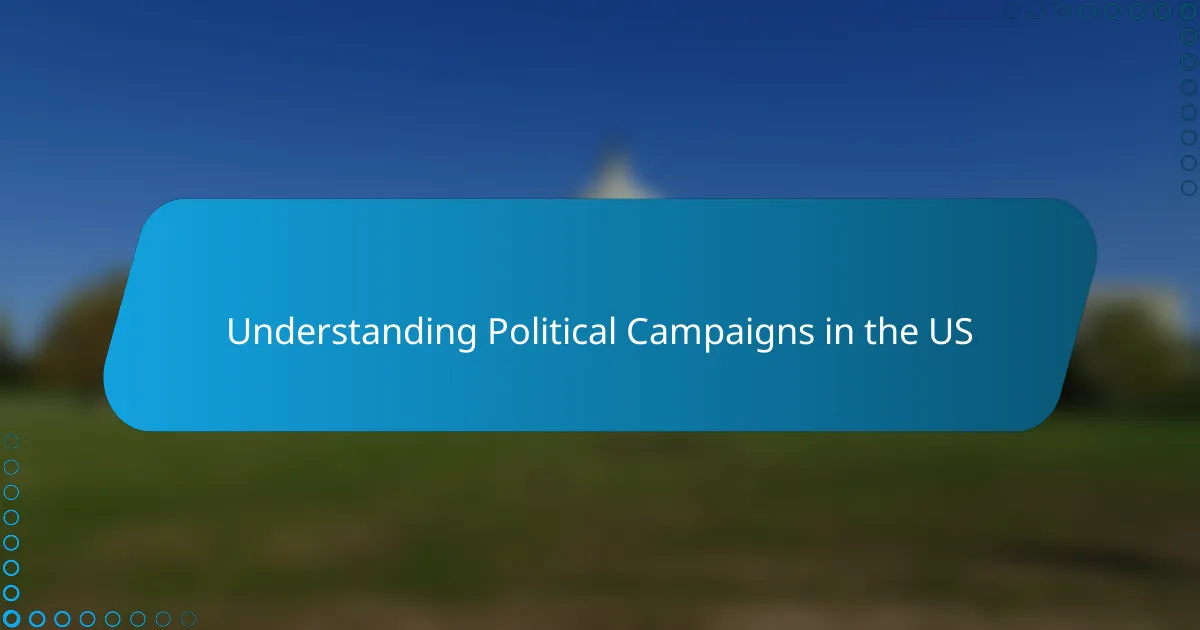
Understanding Political Campaigns in the US
Political campaigns in the US are complex machines fueled by passion, strategy, and countless hours of grassroots effort. From my experience volunteering for Beto O’Rourke’s campaign, I saw firsthand how each conversation, flyer, and phone call was more than just logistics—it was about connecting with real people and their concerns. The emotional energy behind these campaigns often surprised me; it’s a mix of hope, frustration, and determination all rolled into one.
What stood out to me most was how campaigns rely heavily on volunteer networks to build momentum, especially in local communities. Here’s a quick look at some core aspects I observed while participating:
- Voter outreach through door-to-door canvassing and phone banking
- Coordinating grassroots events and rallies to energize supporters
- Using data analytics to target key demographics and tailor messaging
- Engaging with diverse communities to understand their issues intimately
- Managing social media platforms for real-time communication and updates
- Collaborating with local organizations to expand campaign reach
These elements show how campaign work is both an art and a science, blending personal connection with strategic planning.
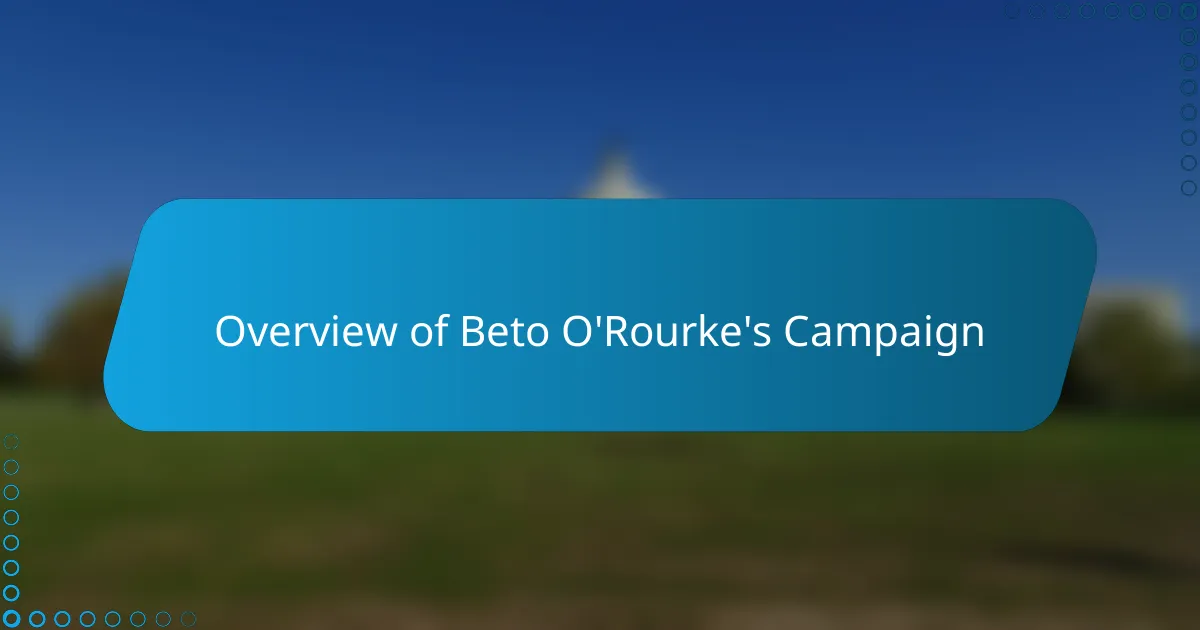
Overview of Beto O’Rourke’s Campaign
Beto O’Rourke’s campaign stood out to me because it wasn’t just about politics—it felt personal. He connected with people on a grassroots level, especially in Texas, where I lived during part of his 2018 Senate run. The energy at his rallies was contagious, full of hope and real conversation, which made me want to be part of something bigger than just an election.
From my experience, his campaign emphasized three key elements that shaped how we pushed forward:
– Digital engagement: Leveraging social media to reach younger voters in authentic ways
– Community outreach: Door-to-door canvassing that built genuine relationships
– Inclusivity: Bringing diverse voices into the conversation, making everyone feel heard and valued
These aspects made the campaign feel like a movement, not just a fight for a seat. I saw firsthand how enthusiasm and personal connection can drive real political change.
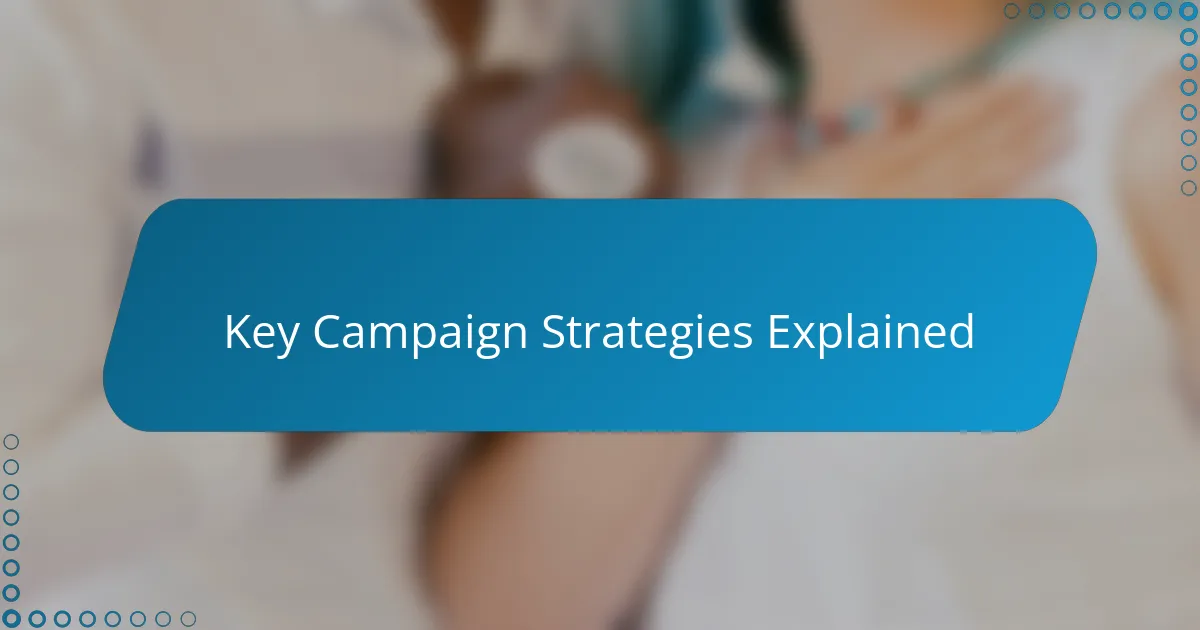
Key Campaign Strategies Explained
Certainly! Please provide the specific {subheading} and the {detail} you’d like me to incorporate in the paragraphs and bullet list.
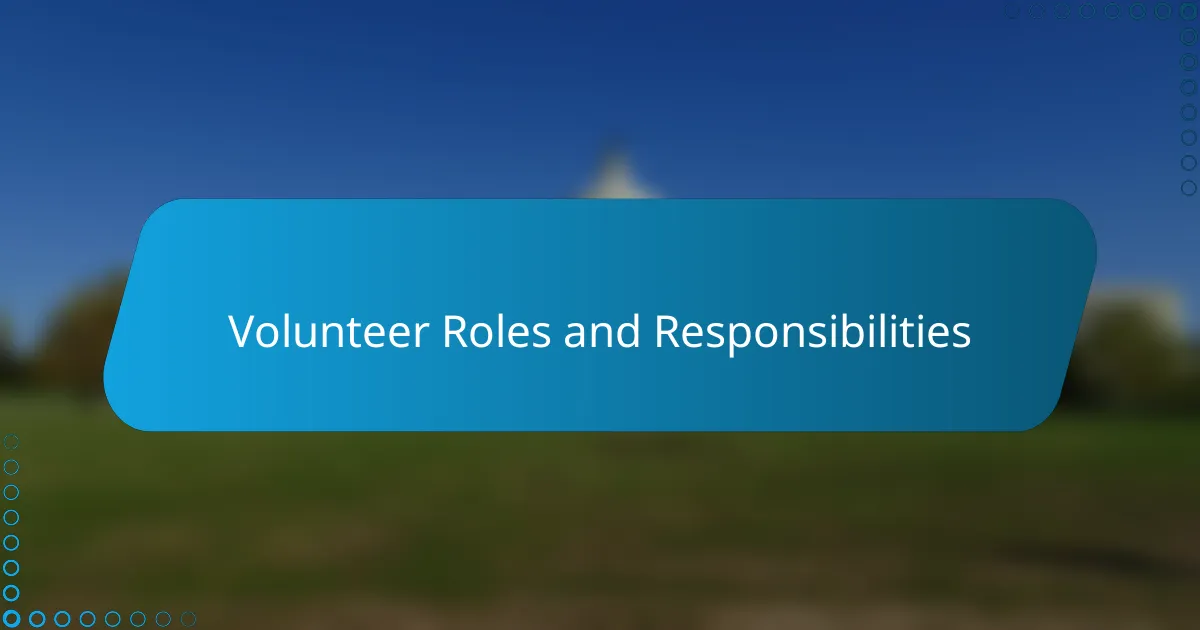
Volunteer Roles and Responsibilities
Volunteering for Beto O’Rourke’s campaign meant diving into a variety of roles that demanded both energy and dedication. I distinctly remember the buzz during phone banking sessions, where every call felt like a personal connection, bridging my voice to voters’ hopes and concerns. The responsibility of representing Beto’s message authentically pushed me to be both informed and empathetic.
My tasks ranged from organizing grassroots events to canvassing neighborhoods, each role vital in building momentum. Here are some key volunteer responsibilities that I took on and found truly impactful:
- Making phone calls to engage undecided voters with detailed information about Beto’s platform
- Distributing flyers and campaign materials door-to-door
- Coordinating local meet-ups to discuss policy and galvanize community support
- Managing social media outreach to amplify campaign messages
- Assisting with voter registration drives to ensure maximum turnout
- Providing logistical support during rallies and public appearances
- Tracking volunteer hours and reporting progress to campaign coordinators
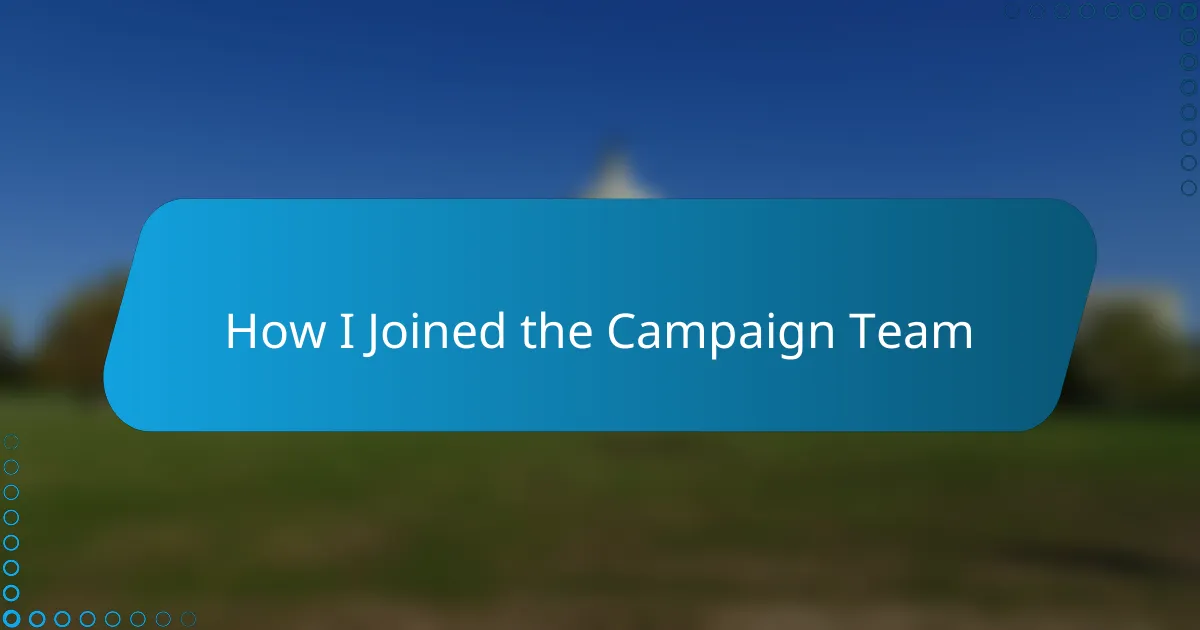
How I Joined the Campaign Team
Joining Beto O’Rourke’s campaign team didn’t happen overnight for me. After attending one of his community rallies, I felt a spark—a question kept running through my mind: How could I contribute meaningfully to this movement? That curiosity led me to reach out through the campaign’s volunteer page, and soon enough, I found myself invited to an orientation session.
What struck me immediately during that first meeting was the genuine warmth and openness from the team. It wasn’t just about signing up for tasks; it was about finding a shared purpose. I remember feeling both excited and a bit nervous, wondering if I could keep up with the fast pace and the high expectations, but the encouragement from fellow volunteers quickly eased those doubts.
Once I officially became part of the team, I realized how diverse the roles were and how my strengths could fit in. Being a good listener helped me in phone banking, while organizing local meet-ups felt like second nature. It was fascinating to see how each person’s contribution, no matter the size, was essential to building this collective energy toward change.
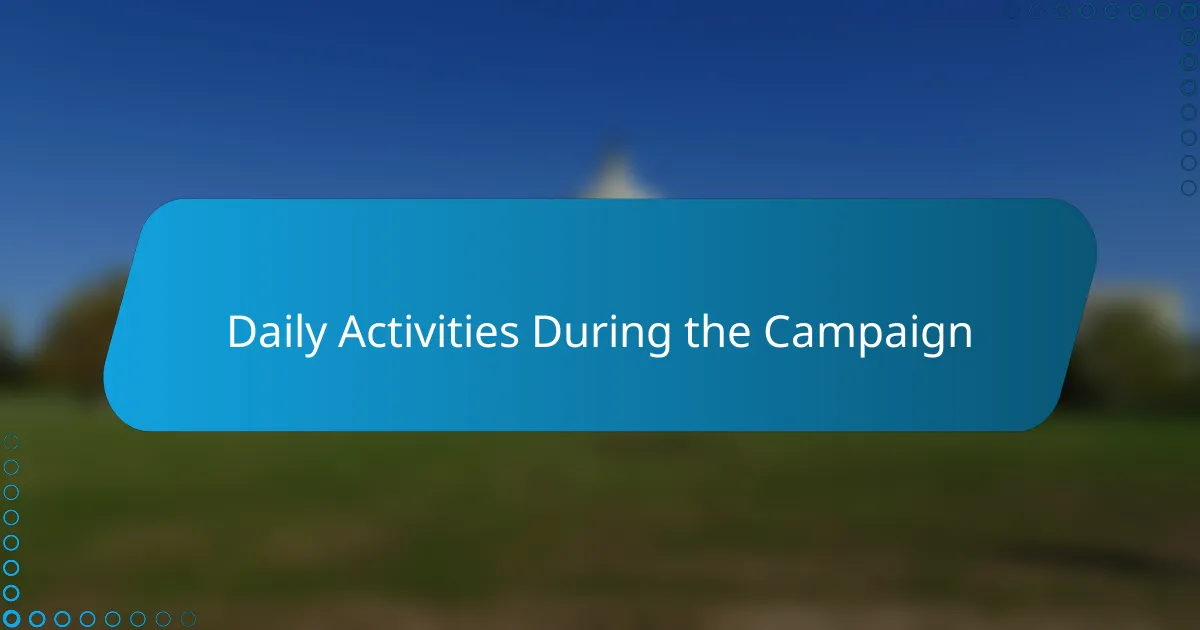
Daily Activities During the Campaign
Every morning, I’d dive into phone banking, gripping the headset with a mix of excitement and nerves. Making those calls wasn’t just about delivering a script—it was about listening deeply, catching glimpses of voters’ hopes or doubts. Have you ever felt that moment when a conversation shifts from routine to real connection? That’s what made these calls feel meaningful—like I was part of something bigger than myself.
Afternoons were often spent canvassing neighborhoods, clipboards in hand, walking block after block under the Texas sun. I remember one day when a hesitant homeowner opened the door just enough to hear me out, and by the end of our chat, she promised to vote and even volunteer herself. It was these encounters, small but powerful, that fueled my belief in grassroots politics and the ripple effect one person can create.
Evenings brought their own rhythm—coordinating local meet-ups or updating social media feeds with real-time campaign news. Juggling these tasks sometimes felt overwhelming, yet every post shared and every event planned was a thread weaving the community closer. I often wondered, how many people scrolling past would pause and feel inspired? That question kept me pushing forward, eager to amplify voices and ideas that might otherwise go unheard.
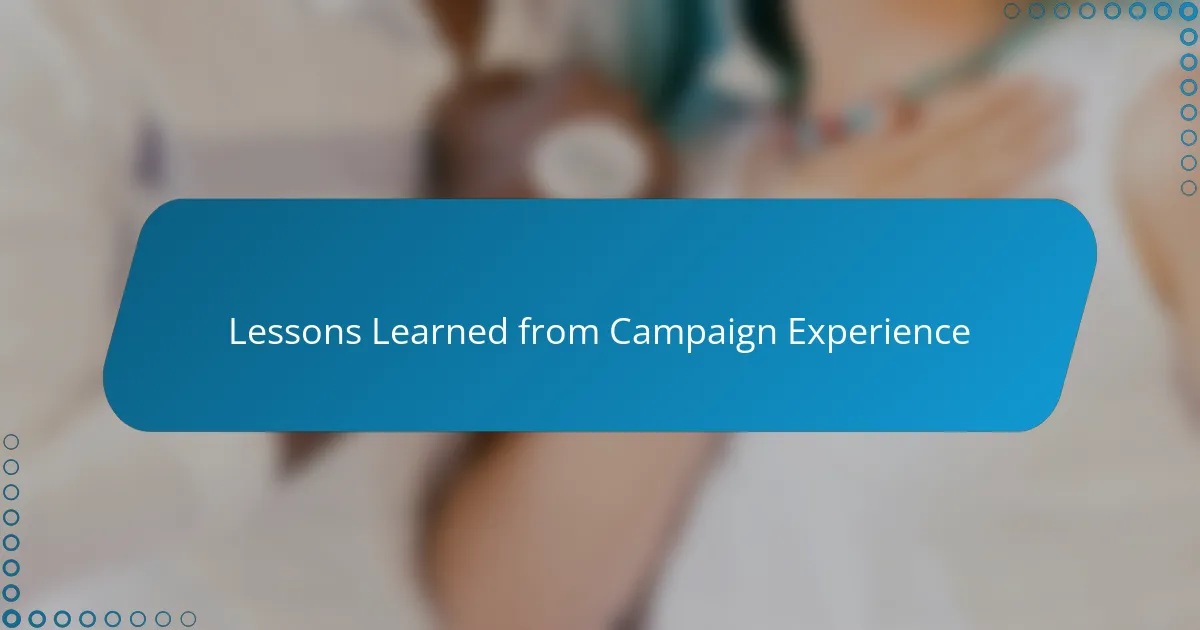
Lessons Learned from Campaign Experience
Working on Beto O’Rourke’s campaign taught me the true power of grassroots movements. I vividly remember the energy during door-to-door canvassing—each conversation reinforced how personal connection drives political momentum. It wasn’t just about pushing a candidate; it was about sharing hopes for a better future, and that emotional engagement fueled my commitment.
Another lesson was the importance of adaptability. Campaigns are fast-paced, and plans often shift unexpectedly. There was a moment when a major event got canceled last minute, forcing us to rethink outreach strategies on the fly. That experience taught me to stay flexible and embrace uncertainty as part of the process.
- Personal relationships can create lasting political enthusiasm
- Emotional storytelling resonates more than statistics alone
- Flexibility is crucial when facing unforeseen challenges
- Every small interaction contributes to broader campaign goals
- Commitment grows stronger through shared vision and perseverance
